 This article on Whippets is part of a series to highlight the Big Picture of health, welfare, and breeding and to help develop Globally Relevant Integrated Health Profiles (GRIHPs) for many breeds. See IPFD's Get a GRIHP! on Breed Health Initiative
This article on Whippets is part of a series to highlight the Big Picture of health, welfare, and breeding and to help develop Globally Relevant Integrated Health Profiles (GRIHPs) for many breeds. See IPFD's Get a GRIHP! on Breed Health Initiative
There are many others doing great work to advance heath, well-being, and welfare in this wonderful breed. We reference and link to terrific work, developments, reports, and research from the UK, USA, Sweden, Finland, and more below. Thanks to all of those working on behalf of Whippets.
This is a 'living document' - so if anyone has more material to share or point us to - please let us know!
Table of Contents
Breed At a Glance - Whippets
 Affectionate, playful, athletic, elegantly built, and of medium size, with easy to groom short, smooth coats, and not known to have a myriad of health issues, the whippet can be a great companion dog. The Whippet is generally considered to be among the healthier purebred dog breeds, many living well from 12-15 years.
Affectionate, playful, athletic, elegantly built, and of medium size, with easy to groom short, smooth coats, and not known to have a myriad of health issues, the whippet can be a great companion dog. The Whippet is generally considered to be among the healthier purebred dog breeds, many living well from 12-15 years.
Key Health Conditions - The Basics: Whippets
Health issues in this breed are rare. Orthopedic issues, heart problems and eye issues are tracked by breeders. Epilepsy and immunological problems (for example allergies, hypothyreosis) exist. Dogs are reported to die of old age; cancers and heart issues can occur. Avoiding injuries to dogs is a primary concern for owners.
What do Caretakers of Whippets Need to Know?
-
Whippets do not do well if kept in isolated in kennels or out-of-doors - Character is shaped by the breed's history – being never “kennel dog” they have always been very affectionate to their families.
-
A few dogs are reported to suffer from separation anxiety.
-
The dogs are intolerant of cold temperatures.
-
Puppies and adults require enough daily exercise to tire them out thoroughly in order for the dogs to remain in good physical condition and content in the home.
-
The dogs were developed to chase small prey, so the dogs of today retain a high prey drive - chasing is a natural instinct, so a secure fenced yard (6') is advised. The dogs should be leashed when not in a secure outdoor location.
Statistics and Health Strategies
Population Statistics
The Whippet population is relatively static in most countries. They are most popular in the UK.

US: AKC Registration statistics are not publicly available; AKC breed popularity ranks are: AKC: 2018 breed rank: 61; 2019 breed rank: 58; 2020 breed rank: 59. Source: https://www.akc.org/most-popular-breeds/. The breed's population appears to have remained steady, based on popularity rank, over the past decade.
The breed is considered "uncommon" by the American Whippet Club, who also caution, "Whippet puppies are available as companions from responsible breeders nationwide, but as very few Whippet breeders produce more than two litters a year, you may have to spend some time on a local breeder’s waiting list if you want to buy locally."
Health & Longevity Statistics
Agria - Swedish Breed Profiles
 CONTEXT: For many years, Agria Animal Insurance, Sweden (Agria Djurförsäkring, Stockholm, Sweden) has supported veterinary research and provided statistics on diagnoses for health and life claims to Swedish breed clubs. See Breeds with Swedish Insurance Data and Agria Breed Profiles (where breeds are compared to All Breeds)! We recommend that you download the Agria Breed Profile for the Whippets and study it for full available information. Some excerpts are shown below! The great benefits of the Swedish insurance data are that they include almost 40% of the national population of dogs, so are very representative; note that animals at very old ages are likely under-represented. Most importantly, information is available on all insured dogs, not simply those who get sick or die. This allows calculation of population-based rates (expressed as events per 10,000 years-at-risk) as well as risks and proportions.
CONTEXT: For many years, Agria Animal Insurance, Sweden (Agria Djurförsäkring, Stockholm, Sweden) has supported veterinary research and provided statistics on diagnoses for health and life claims to Swedish breed clubs. See Breeds with Swedish Insurance Data and Agria Breed Profiles (where breeds are compared to All Breeds)! We recommend that you download the Agria Breed Profile for the Whippets and study it for full available information. Some excerpts are shown below! The great benefits of the Swedish insurance data are that they include almost 40% of the national population of dogs, so are very representative; note that animals at very old ages are likely under-represented. Most importantly, information is available on all insured dogs, not simply those who get sick or die. This allows calculation of population-based rates (expressed as events per 10,000 years-at-risk) as well as risks and proportions.
Statistics are presented as overall morbidity (rate of one or more veterinary care events [VCE]) or mortality (death), by general diagnostic categories, and by specific diagnoses.
Agria Breed Profile Whippets 2011-2016
Extracts from Veterinary Care Events - MORBIDITY
Relative Risk Morbidity of whippets compared to All Breeds: 1.07. (The risk in the Whippet is 1.07 times as high than for All Breeds.) Whippets are a relatively healthy breed - very similar to 'All Breeds' in occurrence of overall health.


Whippets, as said above, are relatively healthy. Most higher risk conditions related to their activities - i.e., trauma and injuries are common in the breed.

Note: 'UNS/VAR' means that the veterinarian did not specify a specific location or diagnosis or that there were symptoms from two locations or more.

Extracts from Agria Breed Profile (Life) - MORTALITY
Median Age (years) at death: 9.8 (All Breeds: 7.4)

Mortality - Relative Risk Mortality of whippets compared to All Breeds: 1.15. (The risk in the Whippet is 1.15 times as high than for All Breeds.).

Most common specific causes of death: dead/euthanized, vomiting/diarrhea/gastroenteritis, lymphosarcoma, car/vehicle accidents but note the actual risks - highest increased risk is 2-2.5.
Finland: Whippet Mortality Data
Longevity and causes of death in Finland - 2012-2021, Finnish Kennel Club breeding database:
-
Average lifespan 11 years
-
Average lifespan 14 years when the cause of death is old age
-
Most common specified causes of death: old age, tumor & cancer, accident, heart disease, spinal disease
-
Worth noting: 8 % died because of an accident at the average age of 6 years. This is the third most common cause of death in the breed and lowers the average lifespan.

Whippet - Breed-specific Breeding Strategies
Finland: JTO
Based on official health screenings and breed health surveys, whippets are known to have heart, spine and eye diseases, epilepsy, immunological problems - allergies, symmetrical lupoid onychodystrophy (SLO "nail disease"), demodicosis, hypothyreosis - tendency to toe damage, overheating (Exercise-induced Hyperthermia; EIH) and a strong tendency to form tartar.
Requirements for breeding dogs for the litters entering puppy list of the breed club:
-
eye examination (valid for 24 months)
-
heart examination (ultrasound, valid for 24 months)
-
recommended: spine x-ray
-
breeding dogs should be mentally balanced
-
normal reproduction
-
age limits for breeding dogs
-
limitations for the number of offspring
-
no close inbreeding
Heart
Diagnosed diseases:
-
myxomatous mitral valve disease (MMVD; diagnosed 17 dogs, suspected 4)
-
dilated cardiomyopathy (DCM; diagnosed one dog, suspected three)
-
subaortic stenosis (SAS; two dogs)
-
other (three dogs)
Health and Behaviour Survey 2018, 423 dogs; see the JTO (in Finnish), pgs. 57-60 for further information.
Spine
Spondylosis by year of birth: three dogs with mild (2) or moderate (3) spondylosis. FKC Database

Lumbosacral transitional vertebrae (LTV) and vertebral anomaly (VA); dogs screened during 2014-2018. Source: JTO
-
LTV: 182 dogs screened, 37 % normal and 17 % LTV2-LTV4
-
VA: 159 dogs screened, 86 % normal and 14 % VA1-VA2
Information about the grading: Finnish Kennel Club's Requirements for spinal radiography and grading of spinal changes
Eye diseases
Source FKC Database

Most common: vitreous degeneration. Mostly dogs are healthy (94 %).

Other issues
Breed club health data of other issues in health can be found here.
Sweden: RAS
No mandatory health examinations before breeding, but several breeders take their dogs to veterinary eye screening, and results are published in the Swedish Kennel Club database.
Breed Club has an ongoing health survey on their website. Testing for heart problems and hypothyroidism are done to map the situation in the breed.
Hip dysplasia statistics source here.
Statistics is by birth year. Total antal undersöka = Total amount screened. Snittålder för undersökning (månader) = Average age at screening (months). Antal födda = Number born.

Veterinary eye examination
UA = no changes

Norway: RAS
-
largest reproductional problem is cryptorchidism
-
no need for more health testing, because whippets are generally very healthy breed.
2011-2020 health results from the Norwegian Kennel Club:
-19 dogs screened for hip dysplasia: 53% were grade A, 42% grade B and 1 dog (5%) grade C
-148 dogs screened for eye diseases, 91 % of them healthy, 6% had cataracts, 1.4% PRA, 1.4% multifocal retinal dysplasia (mRD); one dog (0.7%) had corneal dystrophy.
Inquiry made by Norsk Myndeklubb (NMK) and Norwegian veterinary school (406 answers):
-
61 dogs (15 %) had skin issues
-
41 dogs (10 %) had some sort of digestive issues and
-
17 (4 %) reported of a heart issue.
Netherlands
Several race clubs for all racing breeds exist.
Breeding recommendations and rules by Raad van Beheer (Dutch Kennel Club) can be found here.
Mandatory parentage testing for all litters born in the country. Breeding age and matador breeding restrictions. Measuring of wither height. Veterinary eye examination, work/race result, show/exterior evaluation, and litter check included in the rules/recommendations.
US
OFA: CHIC | American Whippet Club Health Test Recommendations
Source: https://www.ofa.org/recommended-tests?breed=WP
-
Entry into the Whippet Health Foundation database.
-
Eye Examination by a boarded ACVO Ophthalmologist
-
Cardiac Evaluation (One of the following)
-
Congenital Cardiac Exam by board certified cardiologist, exam must include echocardiogram.
-
Advanced Cardiac Exam - exam must include echocardiogram
-
Basic Cardiac Exam by board certified cardiologist, exam must include echocardiogram.
-
Congenital Deafness (One of the following)
-
OFA evaluation based on BAER test
-
GDC evaluation based on BAER test
-
Autoimmune thyroiditis (Optional but recommended)
-
Hip Dysplasia (Optional but recommended)
OFA WHIPPET: Breed Summary Report All data as of 12-31-2020 - Internal: WHIPPET(1).pdf
US: pre-breeding health screenings have been recommended by the Whippet Health Foundation (WHF) and accepted by the American Whippet Club
Source: http://www.whippethealth.org/Health_PreBreedingScreening.aspx
Required:
-
The Whippet must be in the Whippet Health Foundation database
-
CERF (yearly)
-
Echocardiogram by a board certified cardiologist (yearly)
-
BAER (once)
Recommended:
-
Thyroid testing by an approved lab (every other year)
-
Myostatin Deficiency Test (once)
-
OFA Hips OR PennHIP evaluation (once)
UK
Important health schemes and tests:
Source: The Kennel Club: https://www.thekennelclub.org.uk/search/breeds-a-to-z/breeds/hound/whippet/
Germany
Breed Club: No parental health requirements for registering of litters. Recommendations exist. Notes on von Willebrand disease, eye examination, especially PRA, and myostatin gene testing (“bully gene”). Exterior evaluation “Körung” or show results. Age limitations, number of litter limitations for females.
France
The French club gives minimum breeding requirements in their code of ethics here.
Discussed: myostatin (bully gene); the club publishes test results.
Health Screening Tests for Whippets
Hip & elbow dysplasia
Spinal screening
Congenital deafness
Hypothyroidism
Cardiac diseases
Myostatine mutation “bully-gene” Research: https://www.ncbi.nlm.nih.gov/pmc/articles/PMC1877876/
See the HGTD: Muscular Hypertrophy for more information on double muscling is caused by mutations in the myostatin (MSTN) gene.
Summary: The screening tests shown above are recognized, recommended or required by Kennel & Breed Clubs across borders. The results of screening available in KC/BC documentation indicate there are a few to some tested dogs impacted by conditions as measured by screening. (See Breeding strategies section above for details.)
HGTD DNA Tests for Whippets
The Harmonization of Genetic Testing for Dogs (HGTD) Basics: The HGTD Searchable Database - Search by Breed, Search by Disease / Test and Search by Genetic Test Provider (GTP) / Lab + Genetic Counselling Resources. HGTD catalogs information provided voluntarily from genetic test providers (GTPs) including information on their company and services, quality measures and expertise, tests offered and more. As of January 2021, the HGTD Database includes 82 academic and commercial genetic test providers (GTPs) in 22 countries. Our searchable genetic phenes (phenes = characteristics/genetically controlled feature) database currently holds information on 300+ phenes across all breeds/types and provides information on each phene: links to the Online Mendelian Inheritance in Animals database (OMIA), gene + mutations, a simple and advanced disease description, inheritance details, links to original publications, patents/licenses, comments from the original researchers/experts on application, and breed specific information (such as research/validation) - where possible. Breed Relevance Ratings (BRR) support evidence-based usage and application of genetic tests. The HGTD database relevance rating indicates the level of available evidence supporting the application of a specific genetic test for a specific breed/type. Currently, the relevance rating is based on a wide variety of evidence sources. This includes peer-reviewed research papers, recommendations from the original researchers/test developers, input from additional experts including veterinary specialists, and breed experts. It is hoped that, by being more informative about what we currently know or do not know about a specific test for a specific breed, that dog health advisors and owners can make more informed decisions. Remember, this Breed Relevance Rating is not everything we need to know about the disease or characteristic; it is focused on the genetic test.
HGTD-Whippet
Please note: "Long-haired whippets" are NOT considered as the Whippet breed by the AKC or F.C.I. or The Kennel Club UK.
SUMMARY: There are few breed-specific genetic tests available to the Whippet. Most of the recommended pre-breeding tests are clinical (such as eye examinations). While the direct relevance research is limited, one test important to both the individual dog and potentially for breeding selection would be for Multidrug resistance 1 (MDR1). While most common in herding breeds, this genetic variant has been detecting in whippets and their crosses and can have very serious consequences causing sensitivity to Ivermectin, Loperamide, and several other drugs. Glycogen Storage Disease VII (GSD VII), while possibly rare, has been observed and reported in the breed, and may be important particularly to specific whippet breeding lines. In addition, there is a breed-specific trait test for muscular hypertrophy, or “bully” or “double-muscled” whippets. It should be noted that there are a number of other genetic tests available to the whippet, perhaps packaged as breed specific, where the relevance is currently unknown.
♦ BIG PICTURE THINKING ♦ Please take into consideration - Most of the conditions with genetic tests are rare in the general population, but valuable for breeders to use to efficiently reduce risks while supporting good genetic diversity in the breed as a whole. See the Genetic Diversity section below. Also be aware that there are many DNA tests that are available for ALL breeds, that while the test itself is valid, the condition may not be a major health concern or included in health strategies for every breed. See the HGTD for a full list of DNA tests including "Trait" and "Parentage" tests.
DNA Health Tests with some relevance:
Multidrug Resistance 1 (MDR1)
HSP comment:
Multi-Drug Resistance Gene, (MDR) codes for a protein that is responsible for protecting the brain by transporting potentially harmful chemicals away from the brain. In certain breeds, a mutation in the MDR1 gene causes sensitivity to Ivermectin, Loperamide, and other drugs. As a result of the accumulation of toxins, the dog can show neurological symptoms including ataxia, tremors, seizures, excessive salivation, obtundation, bradycardia, mydriasis, loss of menace, loss of papillary light responses, coma and respiratory arrest. Age of onset from birth, but symptoms only noted when exposed to drugs. There are many different types of drugs that have been reported to cause problems.
Glycogen Storage Disease VII (GSD VII)
HSP comment:
Glycogen Storage Disease alters the enzyme glucose-6-phosphatase, a key step in the production of glucose, to be deficient. This leads to chronic low blood sugar, liver damage and premature death. Generalized symptoms of Glycogen Storage Disease in dogs includes weakness, chronic low blood sugar, collapse, lethargy, enlarged, liver anorexia. In addition, Type VII symptoms can include exercise intolerance, muscle cramps, occasional hemolytic crisis.
Muscular Hypertrophy
HSP comment:
Muscular Hypertrophy, also known as double muscling is caused by mutations in the myostatin (MSTN) gene. Dogs with one copy of the mutation are, on average, more muscular and significantly faster. Researchers caution that as little is known about the health issues and potential risks associated with being a myostatin-mutation carrier, research in this arena should proceed with extreme caution. (Mosher et. al)
Other available health tests, associated with the breed:
Factor VII Deficiency
Collie Eye Anomaly (CEA/CH)
Degenerative Myelopathy
References:
Mosher, DS., Quignon, P., Bustamante, CD., Sutter, NB., Mellersh, CS., Parker, HG., Ostrander, EA. : A mutation in the myostatin gene increases muscle mass and enhances racing performance in heterozygote dogs. PLoS Genet 3:e79, 2007. Pubmed reference: 17530926. DOI: 10.1371/journal.pgen.0030079. https://journals.plos.org/plosgenetics/article?id=10.1371/journal.pgen.0030079
Genetic Diversity in the Whippets - Research & Reports
In the countries we have looked at/included in this GRIHP, for breeders and breed managers there is a recognition of potential health concerns associated with inbreeding. Below find a brief summary of approaches to population management to minimize inbreeding.
Some European and most Nordic countries deny registration on too close inbred litters (usually parent-offspring or siblings)
US: Betterbred / UC Davis: Niels Pedersen: Whippet: preliminary findings June 2, 2020: Genetic Diversity Testing for the Whippet Report: https://vgl.ucdavis.edu/sites/g/files/dgvnsk8836/files/files/page/Whippet20200602.pdf Internal: Whippet20200602.pdf
UK: inbreeding coefficients are available for all breeds; see https://www.thekennelclub.org.uk/search/inbreeding-co-efficient/
References and Resources
Whippet Clubs
DogWellNet Resources
DogWellNet Pedigree Dogs Database Whippet
Database Resources
International: http://www.whippethealth.org/HealthMain.aspx
Note: Dogs certifications/health information, Pedigrees, People and Health Reports are available in the Whippet Health Database, Owned and Operated by the Whippet Health Foundation, Inc.
International: The Breed Archive: Whippet: https://whippet.breedarchive.com/home/index
Sweden: SKK HUNDDATA: https://hundar.skk.se/hunddata/
Sweden: SKK AVELSDATA: https://hundar.skk.se/avelsdata/Initial.aspx
Finland: Jalostustietojärjestelmä | Suomen Kennelliitto: Finnish Kennel Club: https://jalostus.kennelliitto.fi/frmEtusivu.aspx?R=162
Norway: Dogweb: https://www.dogweb.no/dogweb/dw/openPage/hoved.html
France: SCC: Lof Select: https://www.centrale-canine.fr/lofselect
UK: The Kennel Club: Mate Select: https://www.thekennelclub.org.uk/services/public/mateselect/
IPFD and The World Small Animal Veterinary Association
See our series of Meet the Breed articles in the WSAVA Bulletin and associated Get a GRIHP! Articles on DogWellNet.com:
-
Welsh Corgi
-
Dachshund
-
French Bulldog


-
Australian Shepherd
-
Saluki
-
Golden Retriever
-
Bernese Mountain Dog
-
Black Russian Terrier
-
Pug
-
Finnish Spitz
-
Rhodesian Ridgeback
-
Rottweiler
-
Whippet
-
Belgian Shepherd
-
English Bulldog
-
Irish Soft Coated Wheaten Terrier
-
Dalmatian
-
Border Terrier
-
Staffordshire Bull Terrier
-
Siberian Husky
-
Dobermann
-
Shih Tzu
-
English Setter
-
Beagle
-
Chihuahua

 This article on Whippets is part of a series to highlight the Big Picture of health, welfare, and breeding and to help develop Globally Relevant Integrated Health Profiles (GRIHPs) for many breeds. See IPFD's Get a GRIHP! on Breed Health Initiative
This article on Whippets is part of a series to highlight the Big Picture of health, welfare, and breeding and to help develop Globally Relevant Integrated Health Profiles (GRIHPs) for many breeds. See IPFD's Get a GRIHP! on Breed Health Initiative
 Donate
Donate
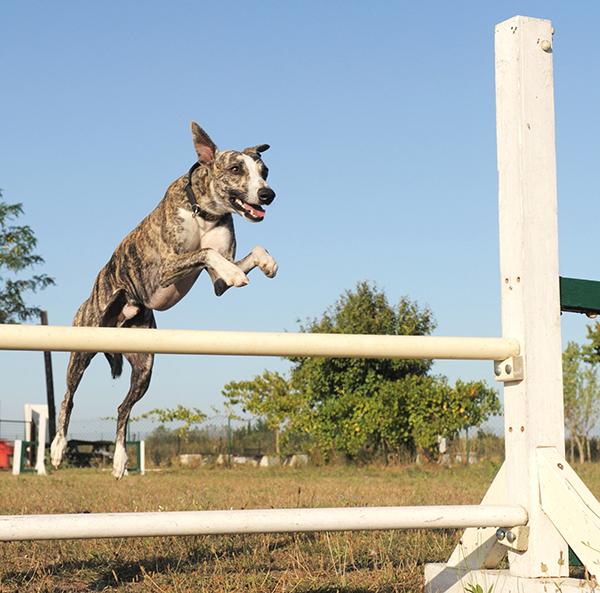 Affectionate, playful, athletic, elegantly built, and of medium size, with easy to groom short, smooth coats, and not known to have a myriad of health issues, the whippet can be a great companion dog. The Whippet is generally considered to be among the healthier purebred dog breeds, many living well from 12-15 years.
Affectionate, playful, athletic, elegantly built, and of medium size, with easy to groom short, smooth coats, and not known to have a myriad of health issues, the whippet can be a great companion dog. The Whippet is generally considered to be among the healthier purebred dog breeds, many living well from 12-15 years.
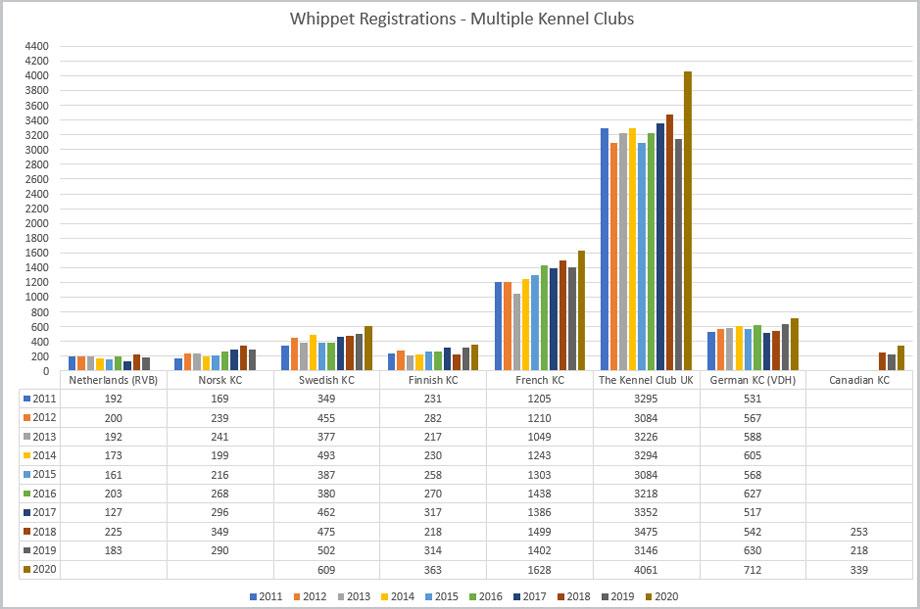


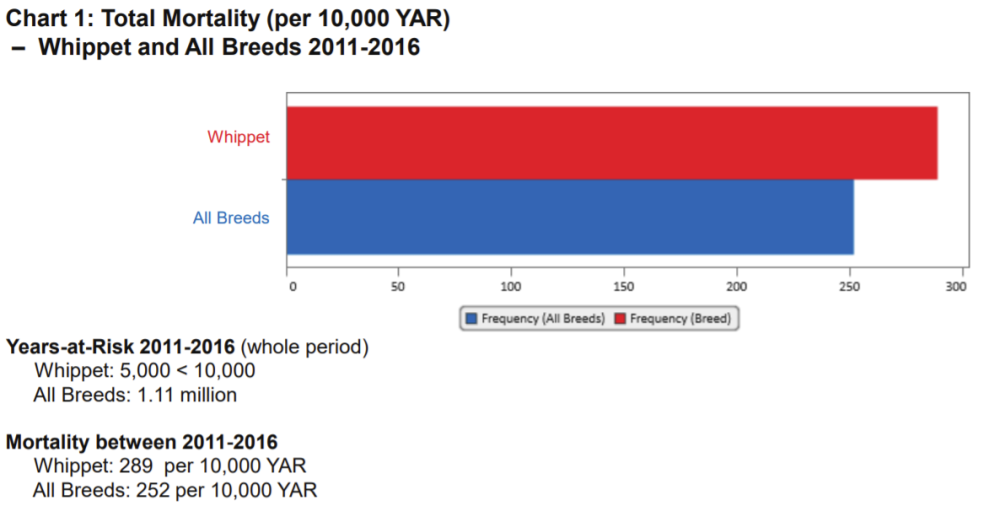
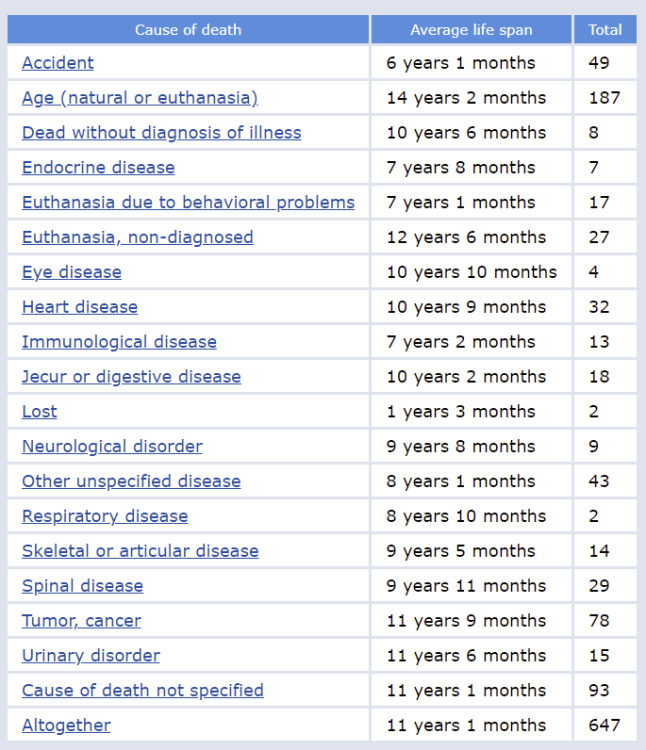
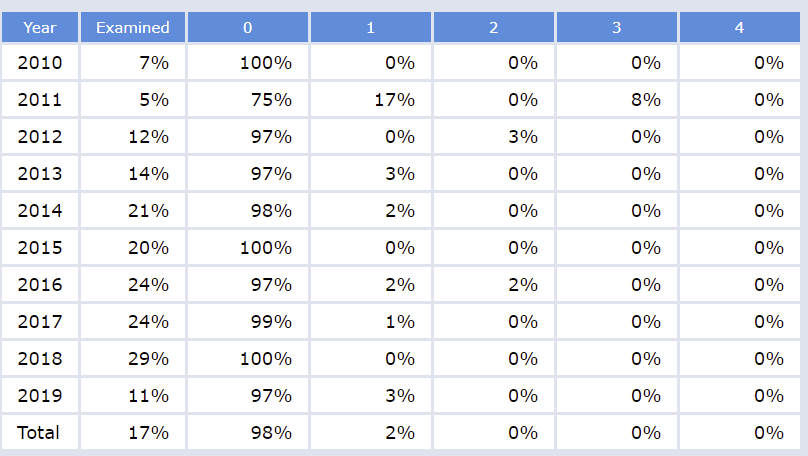
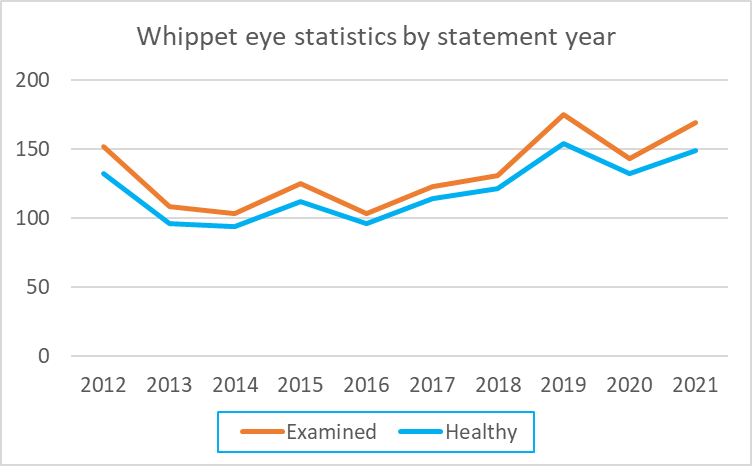
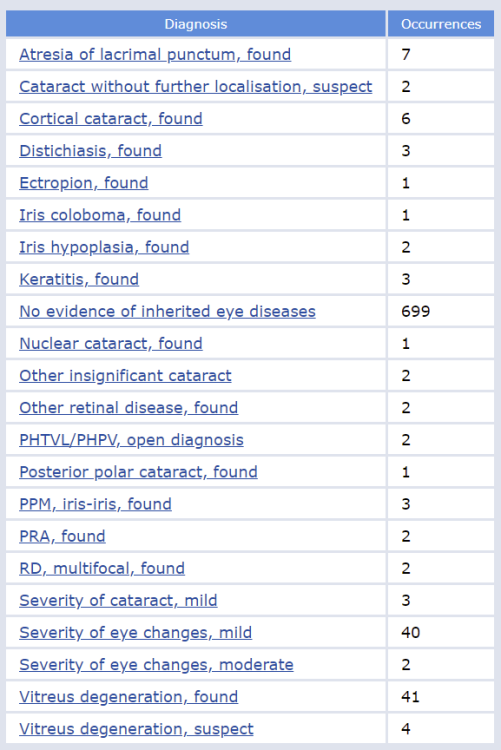



Recommended Comments
There are no comments to display.
Join the conversation
You can post now and register later. If you have an account, sign in now to post with your account.
Note: Your post will require moderator approval before it will be visible.